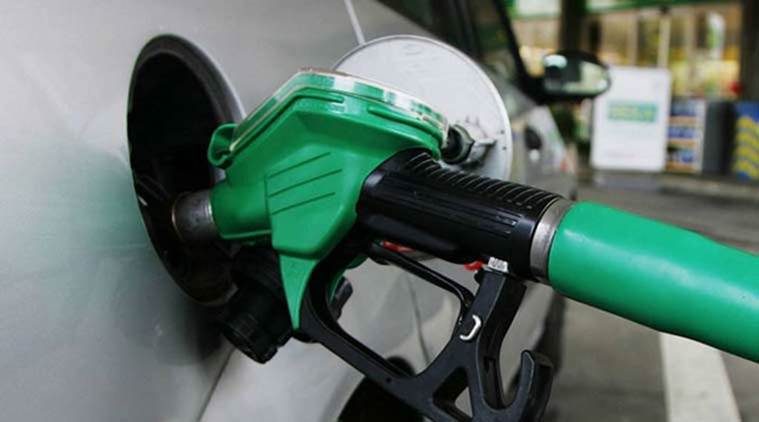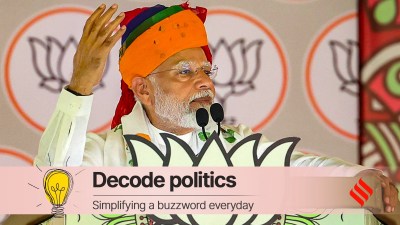- India
- International
Over the barrel: The life and death of the oil age
Slump in oil prices could be temporary or more long-lasting. Policymakers must plan for all scenarios.
 Petroleum will continue to occupy a dominant share of the energy basket for the foreseeable future because of the absence of substitutes for liquid fuels for transportation. (Source: File)
Petroleum will continue to occupy a dominant share of the energy basket for the foreseeable future because of the absence of substitutes for liquid fuels for transportation. (Source: File)
“Lower for now”, “lower for longer” or “lower forever”. These are the catchwords that summarise the current discussion on the future of oil prices. Are the current low prices a temporary blip? Will they stay at these levels for longer than the historic commodity cycle would suggest? Or is “low” now the new normal? I would caution against pegging one’s pennant on any of these masts. The oil market is riven by too many uncertainties. But I would encourage decision-makers to prepare policy responses to each of these possibilities. The price of crude oil today is less than half of what it was when Modi was sworn in as PM in May 2014. At that time it was trending above $100/ barrel. Today, it is quoted at less than $50/ barrel. The primary reason for this decline has been a mismatch between demand and supply. Demand has been sluggish because of plateaued US consumption, the recession in Europe, the slowdown of the Chinese economy and the strengthening of the dollar. In contrast, supply has been robust. The drivers have been US shale production, the decision by Saudi Arabia to forego its role as swing producer, the material increase in production from Iraq, Libya and Iran and the dumping by Wall Street of their speculative holdings. The question that people have struggled to answer is whether this mismatch reflects an inflection point or is a manifestation of historic patterns, albeit deeper and possibly more enduring.
The “lower for now” school build their argument on two pillars: One, there is currently no scalable and competitive substitute for gasoline and diesel as fuels for mobility. Therefore, oil remains a strategic commodity especially given that transportation accounts for almost 60 per cent of the current global oil demand. Two, the bulk of the relatively low-cost reserves of oil and gas are located in countries that are today in free fall. It is a matter of time before one or more of them implodes and radically disrupts the oil supply chain. The Middle East is a social and political cauldron riven by multiple geopolitical tensions. Venezuela is on the verge of a sovereign default and Nigeria and Russia face deepening internal civic unrest. A breakdown of governance in any of these countries could take a sizeable chunk of oil out of the market and convert the current situation of supply overhang into one of supply deficit. Prices would rise sharply.
Proponents of the “lower for longer” school do not disagree fundamentally with the above view. They too believe petroleum will continue to occupy a dominant share of the energy basket for the foreseeable future because of the absence of substitutes for liquid fuels for transportation. And they also accept that prices will be pushed higher because of geopolitics. The difference between the two positions lies in their assessment of the timing of this price increase. This latter group do not expect prices to rise for some time because of essentially three reasons: One, the so-called “high absorber” producer countries like Saudi Arabia, Iran, Iraq and Russia do not have the fiscal space to accept even a short-term cut in revenues. They are running huge budget deficits and therefore need to pump as much oil as is physically and technically possible. They appreciate the risks of this approach and as the recently concluded OPEC meeting last week in Algiers at which the members agreed to cut production by between 2,50,000 and 7,50,000 barrels/day revealed, they are endeavouring to avoid cutting their nose to spite their face. But OPEC is a fractured organisation and it is more than likely that when it comes to distributing the cutbacks among individual members, the agreement will fall apart. And countries will revert to their maximalist positions. Further, to compound matters and this is the second factor, the lead time for bringing “shut in” production back into the market is much shorter for unconventionals (shale) than for conventionals. Thus, in the event prices did move into the $55-$60/bbl range, the 7,50,000 bbls/day of production in the US that has been “shut in” over the past year could be quickly brought back into production as a countervailing check on prices. The third reason is demand. Proponents of this school argue that there has been a structural improvement in the efficiency of oil usage and that whilst the absolute consumption of oil will increase as countries transition towards a more energy intensive developmental model, the rate of growth of demand will be lower than historical trends. Demand will not be as powerful a force as it has been in the past.
Just over a hundred years ago, Winston Churchill, as First Lord of the Admiralty, ordered British Naval ships to use oil rather than coal. This one decision heralded the “oil age”. Coal remained an important part of the energy basket but its market share declined through the 20th century. Advocates of the “lower forever” scenario believe that oil is now at a similar inflection point. They argue that there are credible, competitive and scalable alternatives to liquid fuels for transport around the corner. Already, the US Navy and jet aircraft are experimenting with biofuels, LNG and CNG powered long-distance trucks are on the roads in the US and China and electric vehicles are on an exponential growth curve. Further, solar and wind energy costs have dropped sharply and countries and companies are now investing hugely in upgrading and balancing the transmission and distribution infrastructure to enable renewable energy to scale beyond distributed coverage. And finally, with the signing of COP 21 in Paris and the strengthening of environmental activism, there is strong regulatory and public pressure against fossil fuels. These three forces mark the end of the oil era. Prices will consequently remain at or below their current levels forever.
Oil will no doubt continue to flow within the interstices of national economies but decision-makers would be well advised to contemplate policy against the backdrop of one or a combination of the above scenarios.
EXPRESS OPINION
More Explained
Apr 24: Latest News
- 01
- 02
- 03
- 04
- 05









































